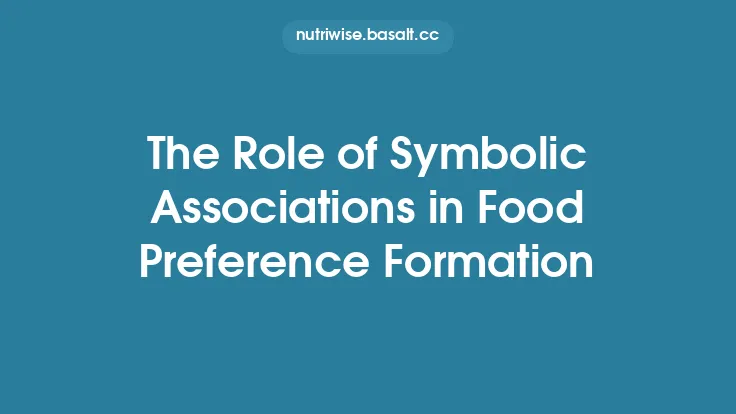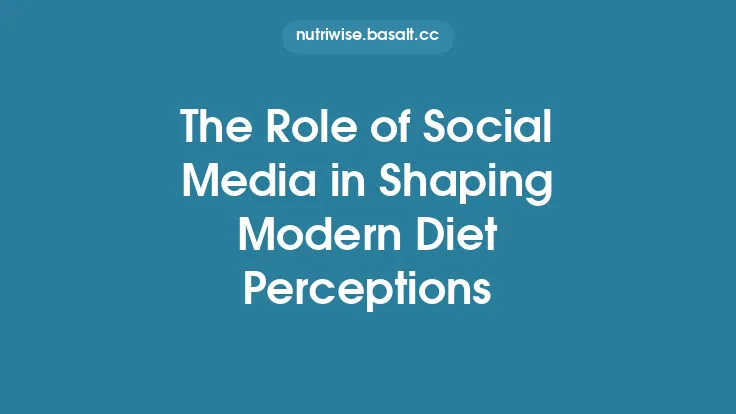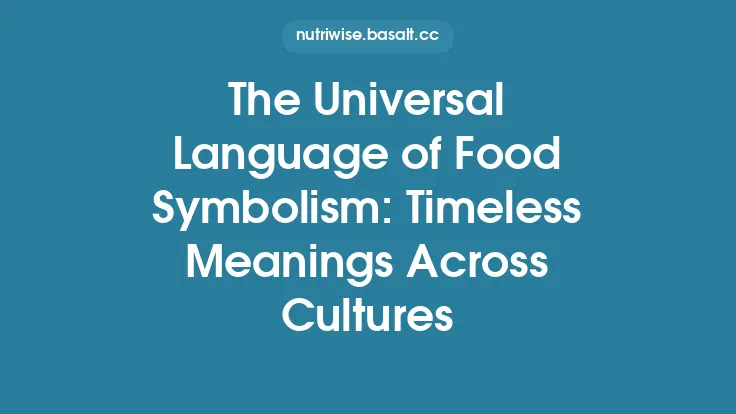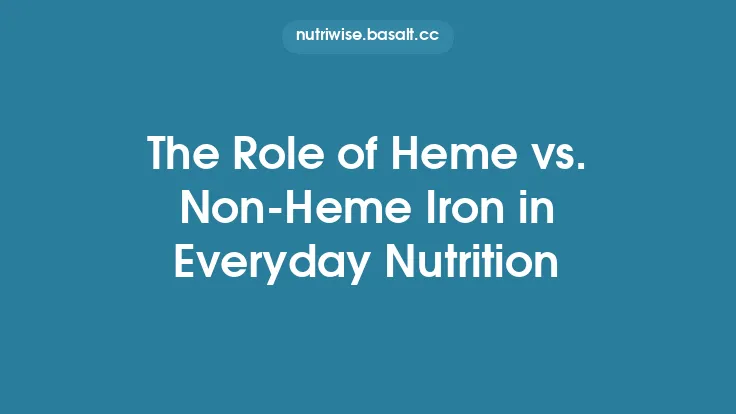The colors that appear on our plates are far more than mere visual appeal; they are carriers of meaning that have been woven into the fabric of societies for millennia. From the golden hue of wheat that heralds abundance to the deep crimson of beetroot that signals vitality, everyday ingredients act as cultural signposts, communicating values, histories, and collective aspirations. Understanding how these chromatic cues have been encoded, transmitted, and transformed offers a window into the symbolic architecture that underpins food traditions worldwide.
Historical Roots of Color Symbolism in Food
The association between color and meaning predates written language. Archaeological evidence from ancient burial sites shows that pigments derived from food—such as ochre from iron‑rich clays mixed with barley or saffron threads—were deliberately placed alongside the deceased, suggesting an early belief in the protective or auspicious power of certain hues. In classical texts, philosophers like Hippocrates linked the “yellow bile” and “black bile” to temperament, a notion that later morphed into culinary symbolism where yellow foods were thought to promote cheerfulness and black foods to absorb negativity.
In many agrarian societies, the seasonal cycle dictated the palette of available ingredients. The first green shoots of spring were celebrated as symbols of renewal, while the deep reds of autumn harvests signified the culmination of labor and the promise of stored nourishment. Over time, these seasonal color patterns crystallized into ritualized meanings that persisted even when the original agricultural context faded.
Regional Color Palettes and Their Core Meanings
| Region | Dominant Color(s) | Core Symbolic Meaning(s) | Representative Ingredients |
|---|---|---|---|
| East Asia (China, Japan, Korea) | Red, Gold, White | Prosperity, Celebration, Purity | Red pepper, turmeric (gold), daikon (white) |
| South Asia (India, Pakistan, Bangladesh) | Yellow, Saffron, Green | Sacredness, Fertility, Renewal | Turmeric, saffron, coriander leaves |
| Mediterranean (Greece, Italy, Spain) | Olive Green, Deep Red, White | Health, Passion, Simplicity | Olive oil, tomatoes, feta cheese |
| Sub‑Saharan Africa | Earthy Browns, Bright Oranges | Ancestral Connection, Vitality | Millet flour, orange-fleshed sweet potatoes |
| Latin America | Bright Reds, Yellows, Greens | Festivity, Sun, Life | Chili peppers, corn, cilantro |
These regional palettes are not arbitrary; they reflect the pigments most readily extracted from locally abundant flora and fauna, as well as the cultural narratives that grew around them. For instance, the prevalence of red in Chinese festive dishes aligns with the cultural belief that red wards off misfortune, a notion reinforced by the visual impact of red lanterns and red envelopes during Lunar New Year celebrations.
Color in Rituals and Ceremonial Foods
- Ritual Purification
In many Hindu ceremonies, white foods such as rice and milk are offered to symbolize purity and the cleansing of the soul. The color white, derived from the natural whiteness of these ingredients, is believed to absorb negative energies, making it a staple in rites of passage.
- Harvest Offerings
In the Andean tradition, golden‑yellow quinoa is presented to the earth deity Pachamama during the annual “Qoyllur Rit’i” festival. The hue mirrors the sun’s life‑giving rays, reinforcing the community’s gratitude for agricultural bounty.
- Life‑Cycle Markers
In Japanese Shinto weddings, the bride often consumes a small portion of *kuro-miso* (black fermented soybean paste) to symbolize the absorption of ancestral wisdom. The deep black color is associated with depth, continuity, and the unseen forces that bind generations.
These examples illustrate how color functions as a symbolic conduit, translating abstract concepts—such as protection, gratitude, or continuity—into tangible, edible forms.
Scientific Foundations of Color Perception in Food
While cultural meanings are socially constructed, the human visual system responds to color in biologically grounded ways. Photoreceptor cells (cones) in the retina are tuned to short (blue), medium (green), and long (red) wavelengths. This trichromatic system influences not only aesthetic preferences but also physiological responses:
- Chromatic Anticipation of Flavor
Studies have shown that the brain anticipates certain taste profiles based on color cues. A bright orange hue primes the palate for sweetness and acidity, while a deep violet may signal bitterness. This anticipatory mechanism can reinforce cultural expectations—for example, the expectation that red fruits are sweet.
- Mood Modulation
Exposure to warm colors (reds, oranges, yellows) can increase arousal and stimulate appetite, whereas cool colors (blues, greens) may have a calming effect. These physiological responses have been harnessed in culinary design to align the emotional tone of a meal with its symbolic intent.
- Nutrient Signaling
Many pigments are themselves bioactive compounds (e.g., carotenoids, anthocyanins). The presence of a vivid color often signals the presence of antioxidants or vitamins, providing an evolutionary advantage that aligns symbolic value with nutritional benefit.
Understanding these mechanisms helps explain why certain colors have become entrenched as symbols of health, vitality, or protection across disparate cultures.
Color as a Communicative Tool in Food Preparation and Presentation
- Layered Symbolism in Multi‑Color Dishes
A classic Persian *sabzi polo* (herb rice) incorporates green herbs, golden saffron, and white rice. Each layer conveys a distinct meaning—green for fertility, gold for wealth, white for purity—creating a composite narrative that is communicated through the plate’s visual hierarchy.
- Seasonal Color Coding
In traditional Korean *banchan* (side dishes), the color composition of the table changes with the seasons: bright greens in spring, vivid reds in summer, earthy browns in autumn, and muted whites in winter. This seasonal coding serves as a visual reminder of the cyclical nature of life and the community’s alignment with natural rhythms.
- Symbolic Garnishing
The practice of sprinkling toasted sesame seeds (light brown) over a dish in East Asian cuisine can denote modesty and humility, while a drizzle of bright red chili oil may be used to invoke vigor and protection against malevolent forces.
These communicative strategies demonstrate that color is not merely decorative; it is an integral part of the semiotic system that chefs and home cooks employ to convey meaning without words.
Case Studies of Specific Ingredients
Turmeric (Curcuma longa) – The Golden Emblem of Prosperity
- Cultural Context: In South Asian rituals, turmeric’s bright yellow is synonymous with auspiciousness. It is applied to the bride’s skin during weddings to bless the union with fertility and wealth.
- Chemical Basis: The pigment curcumin absorbs light in the blue‑green spectrum, reflecting a vivid yellow. Curcumin also possesses anti‑inflammatory properties, reinforcing the ingredient’s association with health and longevity.
Beetroot (Beta vulgaris) – The Crimson of Vitality
- Cultural Context: In Eastern European folk medicine, beetroot’s deep red was believed to fortify the blood and protect against illness. It appears in celebratory dishes during harvest festivals as a symbol of vigor.
- Chemical Basis: Betalains, the red pigments, are potent antioxidants. Their presence signals a high concentration of phytonutrients, aligning the symbolic meaning of vitality with a measurable health benefit.
Olive (Olea europaea) – The Green of Peace and Wisdom
- Cultural Context: In Mediterranean cultures, the olive branch has long been a peace emblem. Green olives served at diplomatic gatherings reinforce the desire for harmony.
- Chemical Basis: Chlorophyll imparts the green hue, while the fruit’s monounsaturated fats contribute to cardiovascular health, subtly linking the symbol of peace with bodily well‑being.
These case studies illustrate how a single ingredient can embody layered meanings that intertwine cultural narratives, visual perception, and biochemical properties.
Evolution of Color Symbolism in Contemporary Contexts
While many traditional color associations remain robust, globalization and culinary fusion have introduced new layers of meaning:
- Hybrid Palettes: The rise of fusion cuisine has blended color symbolism, such as pairing the Japanese white *daikon with Mexican red chili* to create a dish that simultaneously invokes purity and passion.
- Digital Media Influence: Food photography on social platforms amplifies certain colors (e.g., pastel pinks in desserts) that may not have deep historical roots but become trendy symbols of modern indulgence.
- Reinterpretation of Traditional Hues: In contemporary Indian gastronomy, chefs are experimenting with black rice to represent elegance and mystery, expanding the traditional palette beyond the classic golden turmeric.
These shifts demonstrate that color symbolism is a living system, capable of adaptation while retaining its foundational cultural anchors.
Concluding Reflections
The chromatic language of everyday ingredients operates at the intersection of biology, history, and collective belief. By decoding the symbolic power of colors—whether through the golden glow of turmeric, the verdant promise of herbs, or the scarlet vigor of beetroot—we gain insight into how societies encode values, aspirations, and cosmologies into the very sustenance they consume. This enduring dialogue between hue and meaning continues to shape culinary practices, ritual observances, and the shared identity of communities across the globe.





